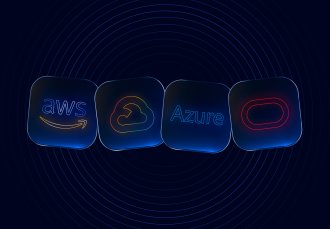
Contact us
Our team would love to hear from you.

We asked one of our QA engineers, Vadim Smolyakov, to share his insights on navigating the challenges of mobile app testing, along with the nuances of localization and accessibility testing.
To achieve maximum efficiency in selecting mobile devices for a test, a QA engineer should create what’s called a device matrix. This matrix includes different hardware and software parameters. Hardware parameters include device model, screen size, and resolution, while the operating system (OS) and version are the software parameters. To build this matrix effectively, engineers consider factors such as the region where app users are located and the popularity of device vendors and OS versions in that region.Using this data, they create the most efficient and market-relevant device and OS combinations. It’s important to keep in mind that a matrix is not static: it should be updated whenever new devices and OS versions are released.
Mobile app testing on real devices and virtual devices—emulators and simulators—offers distinct benefits and limitations. Virtual devices are cheap (or even free), accessible, and time-efficient, but they have limitations such as restricted device selection, lack of performance accuracy, and disconnection from real-world conditions. Real devices offer authentic real-life scenarios, enable mobile-specific checks, deliver accurate performance metrics, and offer access to a wide range of device models. However, they demand significant time and resources as well as enhanced security measures.
Rather than relying exclusively on one or the other, the most effective approach is to use a combination of virtual and real devices. Virtual devices are ideal for early development stages and when time efficiency is crucial. To minimize issues and defects in business-critical apps, testing on real devices is essential, particularly in the later stages of development.
The key to ensuring quality and stability with each release and update lies in well-established processes built on valuing each individual involved in product development. First, a quality release is not only about QA — it’s a collaboration between the development and testing teams. Second, processes should be clearly outlined so that each team member understands their role. This simplifies task execution and minimizes the risk of errors. At the same time, processes should allow for flexibility in unusual situations without restricting team members. Well-defined yet adjustable processes, where team members understand each step leading to a release, ensure every release and update maintains high quality, with no unpleasant surprises.
It is essential to ensure that a mobile app meets user expectations in each region. Mobile app localization testing combines careful consideration for our target languages and regions, professional translation tools and services, and close collaboration with both our client and the development team. Using devices configured for different languages and regions, we verify the correct display of text, including text length, fonts, line breaks, and readability, as well as regional formats such as time, dates, phone numbers, and currencies. We ensure that each supported region has the appropriate icons and color schemes, and, when required, we also verify modified app logic based on cultural preferences. After the app release, key tasks include maintaining content relevance, correcting translation errors, and adapting to new user requirements.
Localization and internationalization testing is not limited to manual testing; a comprehensive approach includes both manual and automated methods. Automating text and format checks using Selenium, Appium, or other specialized plug-ins can be highly effective. However, when it comes to cultural nuances or visual interface elements, manual testing is essential.
Accessibility begins with understanding the target audience and the challenges they may encounter. Guidelines like WCAG and platform-specific standards provide a solid foundation for mobile app accessibility testing. It’s crucial to understand that different audiences require different technologies, such as screen readers, magnifiers, and voice recognition tools. We test keyboard and gesture navigation, text readability (including proper color contrast and font scalability), text alternatives and visual cues for sound-dependent features, simplified navigation, and more.
During testing, automated tools like Accessibility Scanner or Apple’s Accessibility Inspector can help testers identify issues, but manual testing ensures we address all the nuances. Application accessibility requires constant updates to accommodate new technologies, feedback, and evolving standards, so maintenance and support for apps is crucial. As a team, we are committed to creating exceptional solutions that serve the interests and needs of all users. That’s why we not only focus on initial requirements but also apply common sense, viewing the apps we test from the users’ perspective.
Our team would love to hear from you.
Fill out the form, and we’ve got you covered.
What happens next?
San Diego, California
4445 Eastgate Mall, Suite 200
92121, 1-800-288-9659
San Francisco, California
50 California St #1500
94111, 1-800-288-9659
Pittsburgh, Pennsylvania
One Oxford Centre, 500 Grant St Suite 2900
15219, 1-800-288-9659
Durham, North Carolina
RTP Meridian, 2530 Meridian Pkwy Suite 300
27713, 1-800-288-9659
San Jose, Costa Rica
Escazú Corporate Centre, Piso 6
40602, 1-800-288-9659